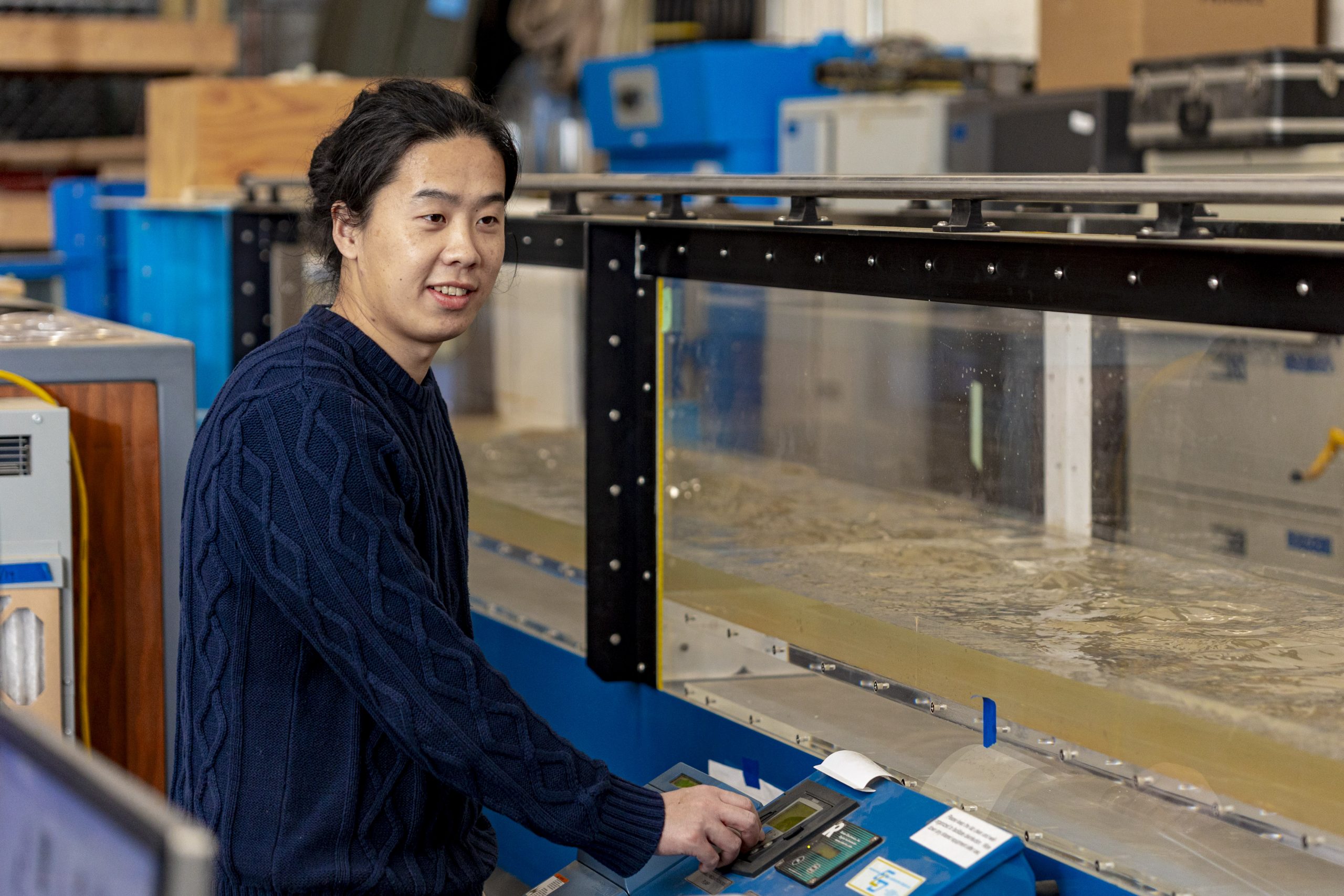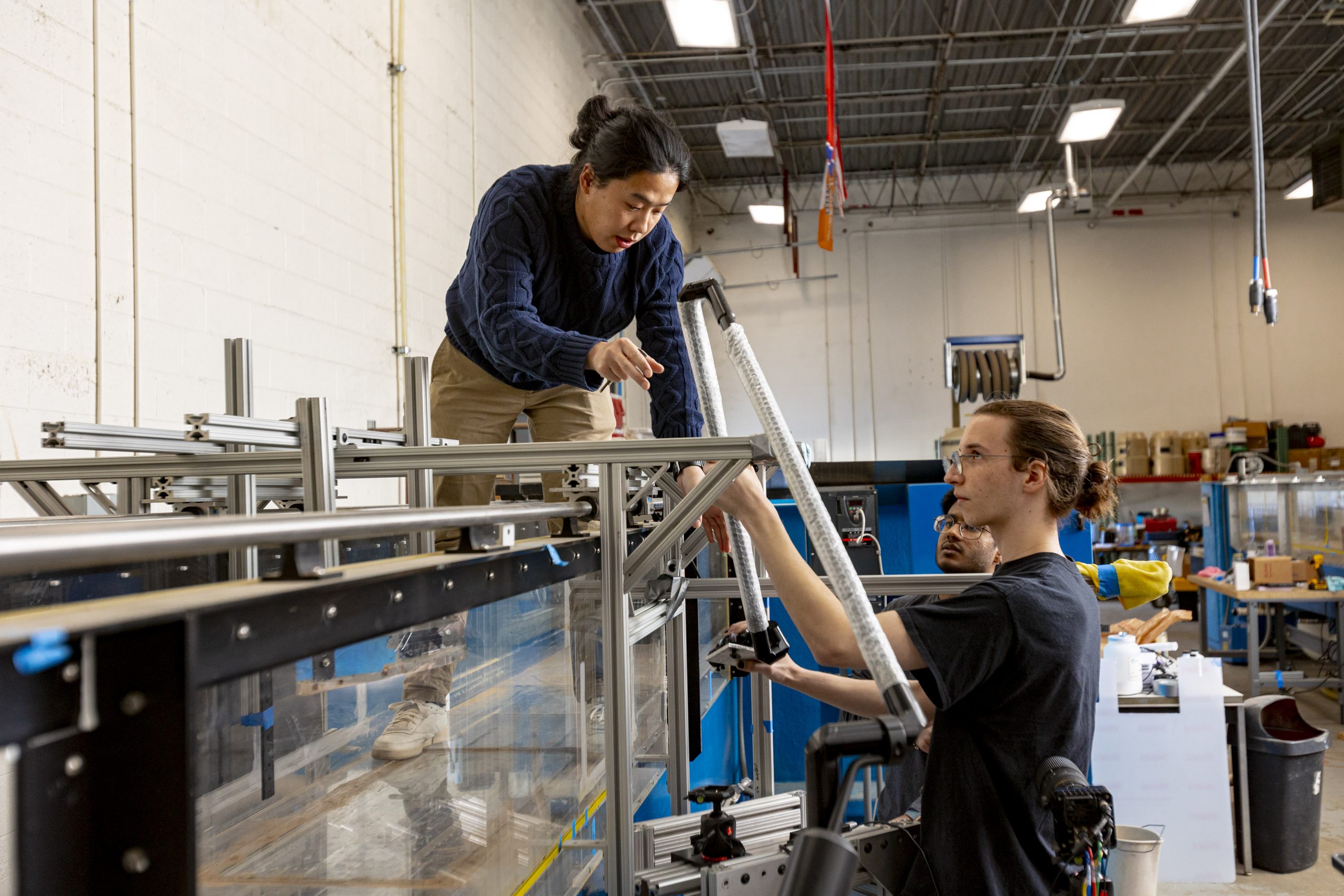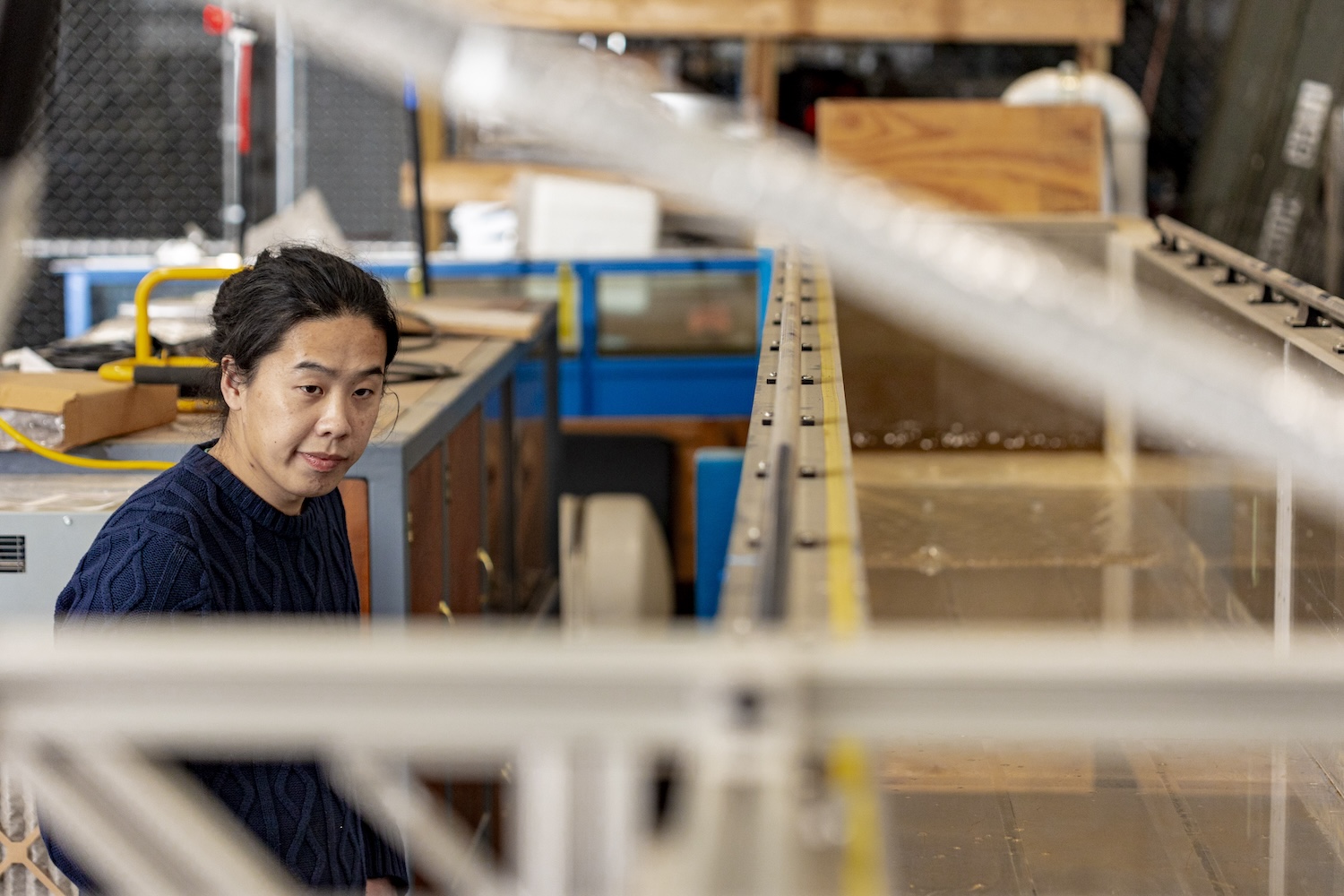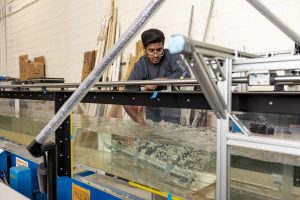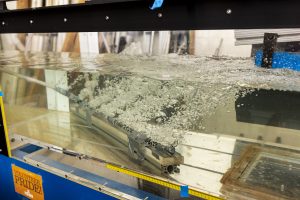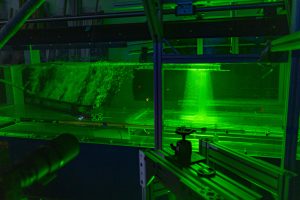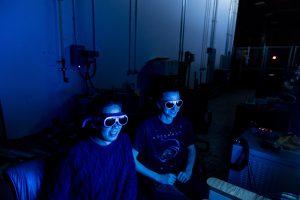By Rhiannon Potkey. Photography by Shawn Poynter.
Municipal wastewater operations are often the largest energy expense in communities, amounting nationally to about $2 billion in annual electric costs. Inaccurate system design and configuration can contribute to excessive energy consumption and lead to inefficient contaminant removal and the need for costly retrofit.
Finding a potential solution to the issue and helping to provide significant environmental, economic, and social benefits to communities has been a driving force for Assistant Professor Haochen Li in the Department of Civil and Environmental Engineering.
Li’s work was recently acknowledged by the American Society of Civil Engineers Environmentaland Water Resources Institute. He was awarded the 2023 Rudolph Hering Medal, which recognizes outstanding research that contributes to the advancement of the environmental branch of the engineering profession.
Li and co-author John Sansalone from the University of Florida were honored for the paper “Benchmarking Reynolds- Averaged Navier-Stokes Turbulence Models for Water Clarification Systems,” which was published in the Journal of Environmental Engineering in 2021.
The Hering Medal is an annual honor that has been awarded since 1924. Li received a bronze medal and a cash prize of $1,500.
“Receiving the medal was a moment of quiet reflection more than anything,” Li said. “It was a pause to acknowledge the journey, the many hands that contributed to the work, and the incremental steps that lead to broader discoveries.”
Establishing a New Standard
In the past two decades, advancements in computational fluid dynamic modeling have enabled engineers to evaluate and improve urban water infrastructure designs for potable water, stormwater, and wastewater before construction. However, robust and efficient simulation of turbulent flow and coupled pollutant transport remains a major challenge. High-fidelity simulations like large-eddy (LES) simulations can yield higher accuracy but are significantly more computationally expensive than models based on Reynolds-averaged Navier-Stokes (RANS) equations.
The university’s commitment to innovation and excellence—especially the recent AI Tennessee and Global Energy Ecosystems initiatives—aligns with my research goals, making it an ideal place for conducting high-impact research.”
Li and Sansalone’s study, which received funding from the US Geological Survey via the University of Florida’s Water Resources Institute, assesses the predictive capability of RANS models with high-fidelity LES results and laser Doppler anemometry.
“I had observed discrepancies between RANS simulations and experimental data in certain turbulent flow structure, even in simple system geometry,” Li said. “These discrepancies highlighted some limitations of RANS models in capturing fundamental flow phenomena, which led me to explore more about the underlying assumptions, the range of their applicability, and potential improvements or alternatives to enhance their predictive capabilities.”
The study used a 30-year-old database of values gathered from physical tests with a bench-scale water clarification system. It considered three cases: two-sided deflector, one-sided deflector, and a system without a deflector. Overall, the LES model was superior to the RANS turbulence models in all three cases.
“I hope that the biggest impact of our benchmarking paper will be to establish a new standard for the accuracy and reliability of simulations in our field,” said Li. “By providing a comprehensive comparison of various models and identifying best practices, I aim to guide future research and applications towards more effective and efficient solutions, ultimately contributing to advancements in environmental engineering.”
Li’s high-impact research has benefited from his surroundings and the tools available in UT’s Water Infrastructure Laboratory, a multidisciplinary environmental fluid dynamics laboratory in CEE. The lab is equipped with state-of-the-art physical modeling facilities and numerical simulation platforms.
“UT offers a vibrant research environment with access to cutting-edge facilities, a collaborative community of scholars, and strong support for interdisciplinary projects,” Li said.
“The university’s commitment to innovation and excellence–especially the recent AI Tennessee and Global Energy Ecosystems initiatives—aligns with my research goals, making it an ideal place for conducting high-impact research.”
Photo Gallery
Take a look at Li working in the lab with his students.
